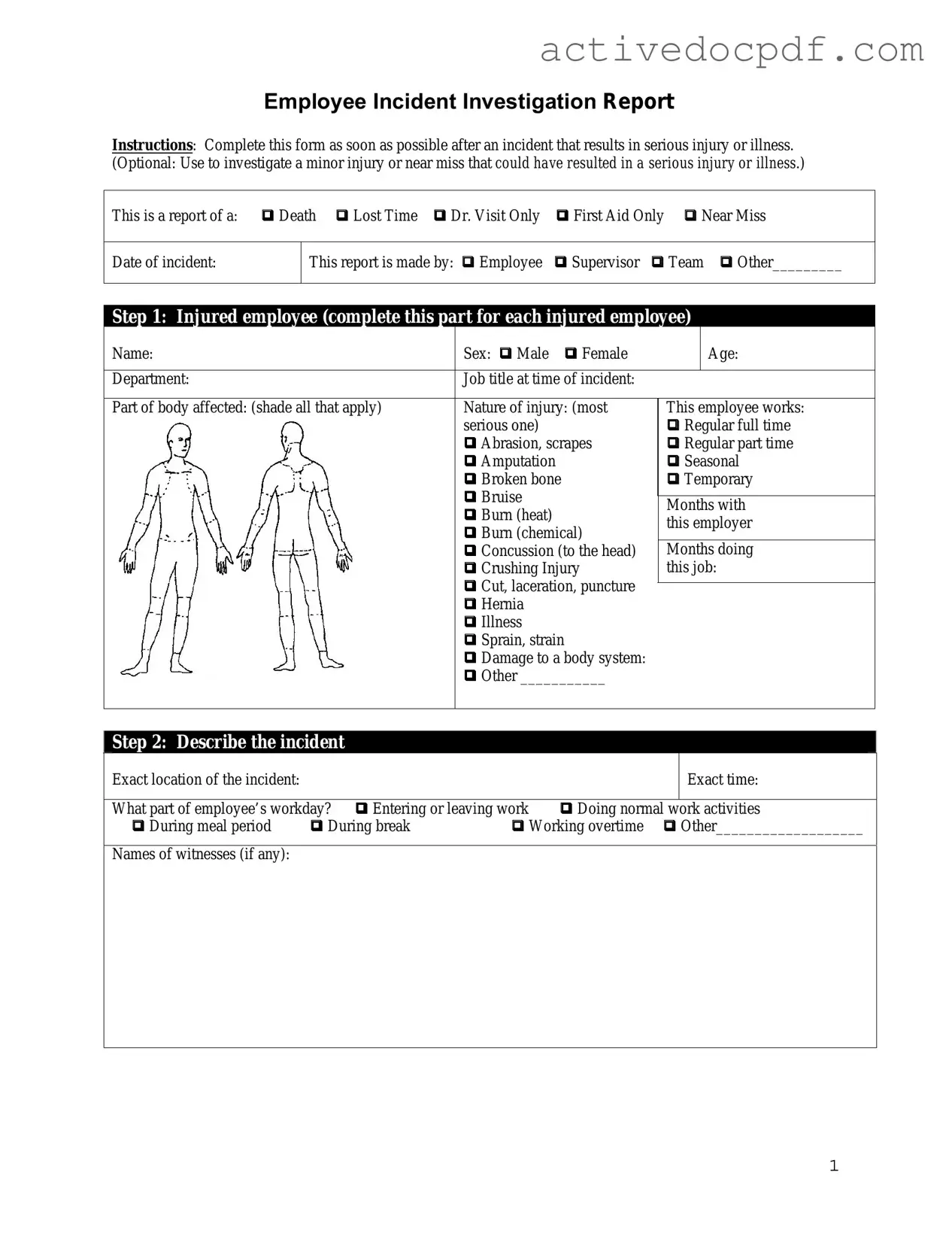The Employee Accident Report form serves to document incidents that occur in the workplace. This form captures essential details about the accident, including the nature of the injury, the circumstances surrounding the event, and any witnesses present. By collecting this information, employers can analyze trends, improve safety protocols, and comply with legal requirements.
Typically, the employee involved in the accident is responsible for completing the form. However, supervisors or managers may also need to contribute information, especially if they witnessed the incident or were involved in the response. It is crucial for all relevant parties to provide accurate and complete information to ensure a thorough investigation.
The form should be submitted as soon as possible after the incident occurs. Prompt reporting allows for timely investigation and can help in addressing any immediate safety concerns. Most organizations require that the form be submitted within 24 hours of the accident to ensure accuracy and compliance with internal policies.
The Employee Accident Report form generally requires the following information:
-
The employee's name and contact information
-
The date, time, and location of the accident
-
A detailed description of the incident
-
The nature and extent of any injuries sustained
-
Names and contact information of any witnesses
-
Actions taken after the incident, such as first aid administered
Providing complete and accurate details is essential for effective follow-up and prevention strategies.
Once the Employee Accident Report form is submitted, the designated safety officer or human resources personnel will review it. They may conduct interviews with the employee and any witnesses to gather more information. An investigation will follow to determine the cause of the accident and to identify any necessary corrective actions. The findings will often be documented, and the organization may implement changes to enhance workplace safety.
Yes, the form can be amended if new information becomes available or if there are corrections to be made. It is important to communicate any changes to the appropriate personnel as soon as possible. This ensures that the record remains accurate and reflects the true nature of the incident.
Failing to complete the Employee Accident Report form can have serious implications. Without proper documentation, an employer may struggle to address safety concerns or comply with legal requirements. Additionally, employees may lose their rights to workers' compensation benefits if they do not report the incident in a timely manner. It is in everyone's best interest to ensure that the form is completed accurately and submitted promptly.
The Employee Accident Report form is typically available through your company's human resources department or safety office. Many organizations also provide the form online, allowing employees to access it easily. If you are unsure where to find it, reaching out to your supervisor or HR representative is a good first step.
